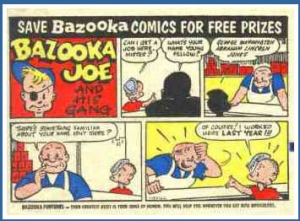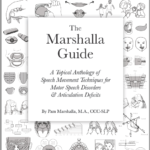Use Comics to Develop Higher Order Language
How long has it been since you read a comic book or the funnies? Most people began reading them for fun when they were young tweeners and probably never thought much of it. If you ever analyzed the language use in most comic books and funnies you might realize that they can make excellent and natural higher order language learning tools.
Most of us developed higher order language so naturally that we didn’t even notice. Higher order language is basically the ability to use and understand synonyms, antonyms, homonyms, homographs, figurative expressions, dual meaning sentences, metaphors, similes, idioms, sarcasm and non-verbal messages that might contribute to meaning. Higher order language allows us to see the “big picture.” Without the ability to understand and mentally manipulate higher order language you are unable to play with language, completing crossword puzzles is painful and you have difficulty “getting” jokes. These are very right brain concepts.
Students with language disabilities, poor academic skills, poor hearing or limited life experiences often have difficulty acquiring higher order language skills. You will be able to pick these kids out easily. They are the kids who struggle with reading comprehension, don’t get jokes, misunderstand sarcasm, misinterpret social situations and may even have frequent disagreements with peers.
The language used in comic books or in the funnies encompasses many higher order language structures. In addition there is a picture component that will aid comprehension. Take Peanuts for example, the comic itself is from the point of view of the children. The author/genius Charles Schulz, used the language in the comic to make it funny, show emotion or even to make a political point. He used the children in the comic to make it cute and appeal to children. If you grew up in the United States, the first comics you probably read were Bazooka Joe. Part of the experience of Bazooka gum was (and still is) reading the comic. Bazooka Joe comics were used to tell a joke or provide wisdom. For many years the front page of the Sunday Funnies were graced by The Family Circus. Each week Dolly, Billy, Jeffy, and P.J. got into predicaments that were familiar in every family. The cartoonist Bill Keane often used synonyms, antonyms, homonyms, sarcasm and dual meaning language to get his message across and make his comic funny.
Gary Larson’s The Far Side wins the prize for the best usage of higher order language. These simple one cell cartoons combined with a few lines of written language speak volumes. Comics in general are a creative medium incorporating both written and picture messages. When parents read comics to their children it adds another layer of auditory learning.
As kids get older their tastes will change. Don’t freak out when your child asks to buy Mad Magazine. It’s rude and it’s crude but it is froth with higher order language and unfortunately humor that interests them. Some daily funnies tell an ongoing saga which can show conflict and encourage prediction. The beauty of comics is that even children with language deficits can grow in their comic maturity. They might however need increased explanation as to “why” something is funny. That makes great conversation at the family table.
So while you might want your children to read the classics (and they should) encourage a variety of reading material including comics. Comics can do just as much for their higher order language development and you both might get a laugh out of it too.
Teresa Sadowski MA/SLP-ccc
The School Speech Therapist








